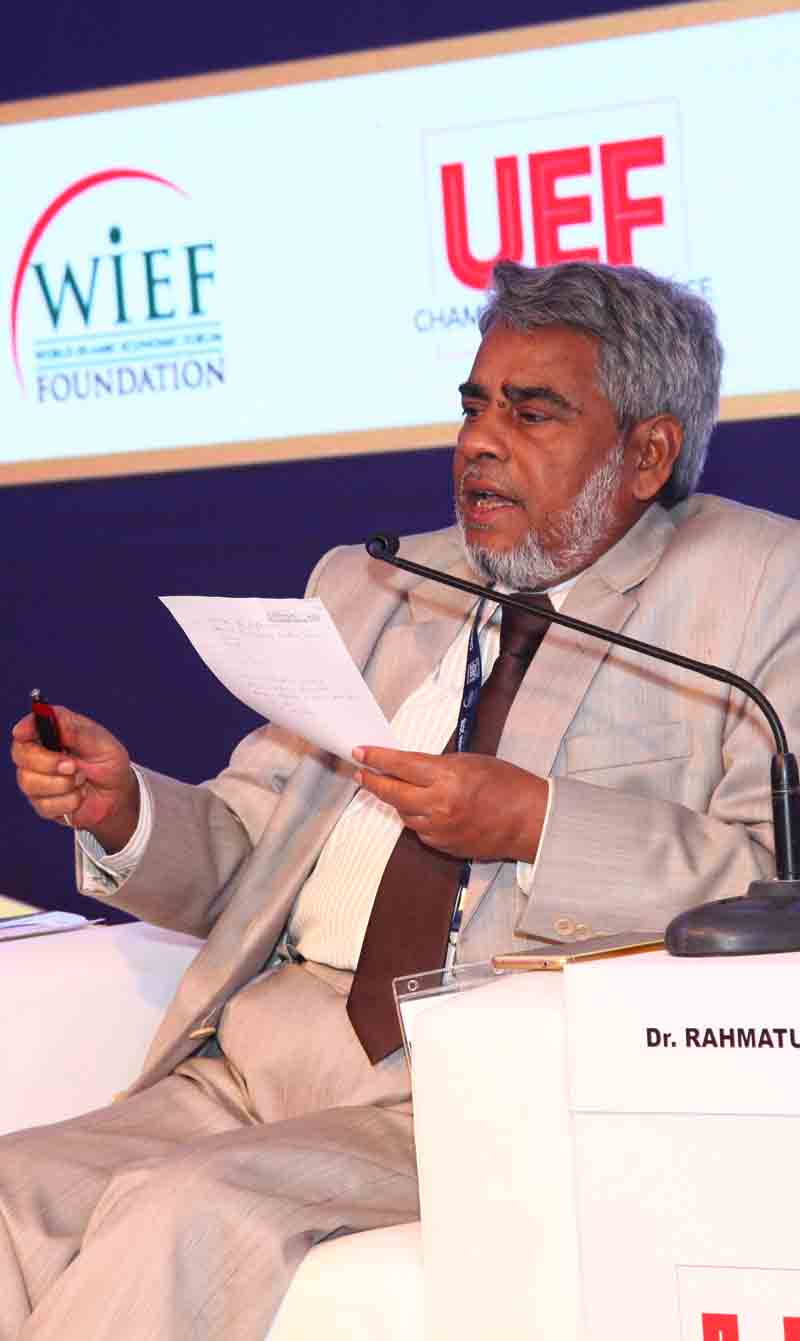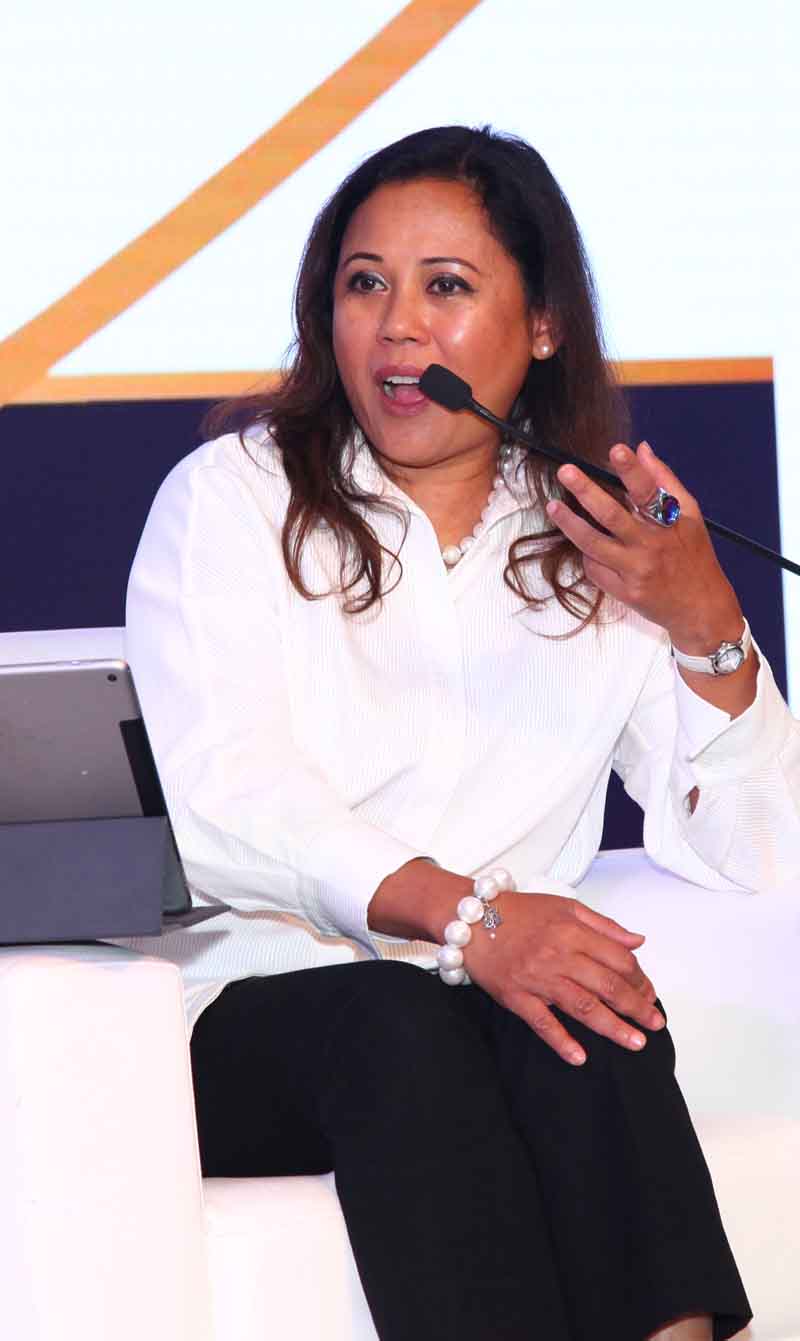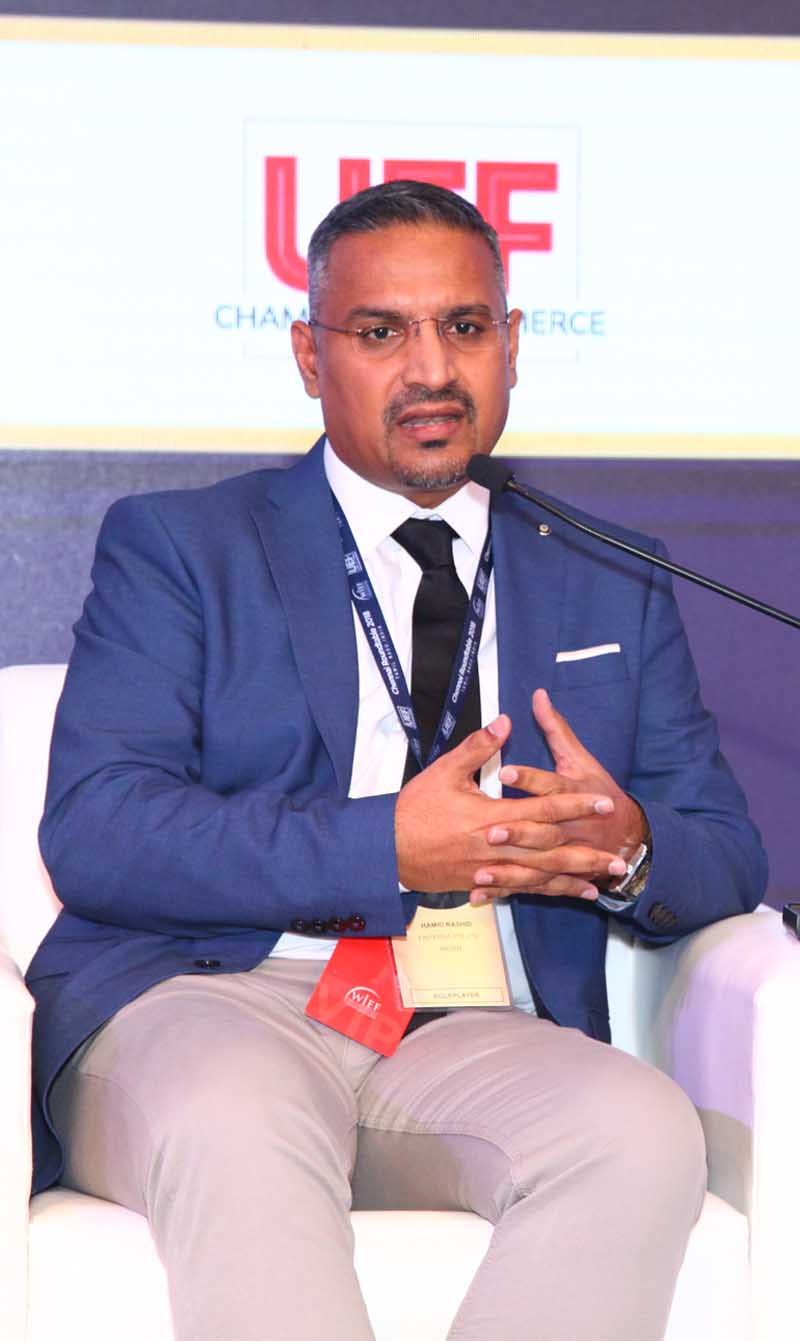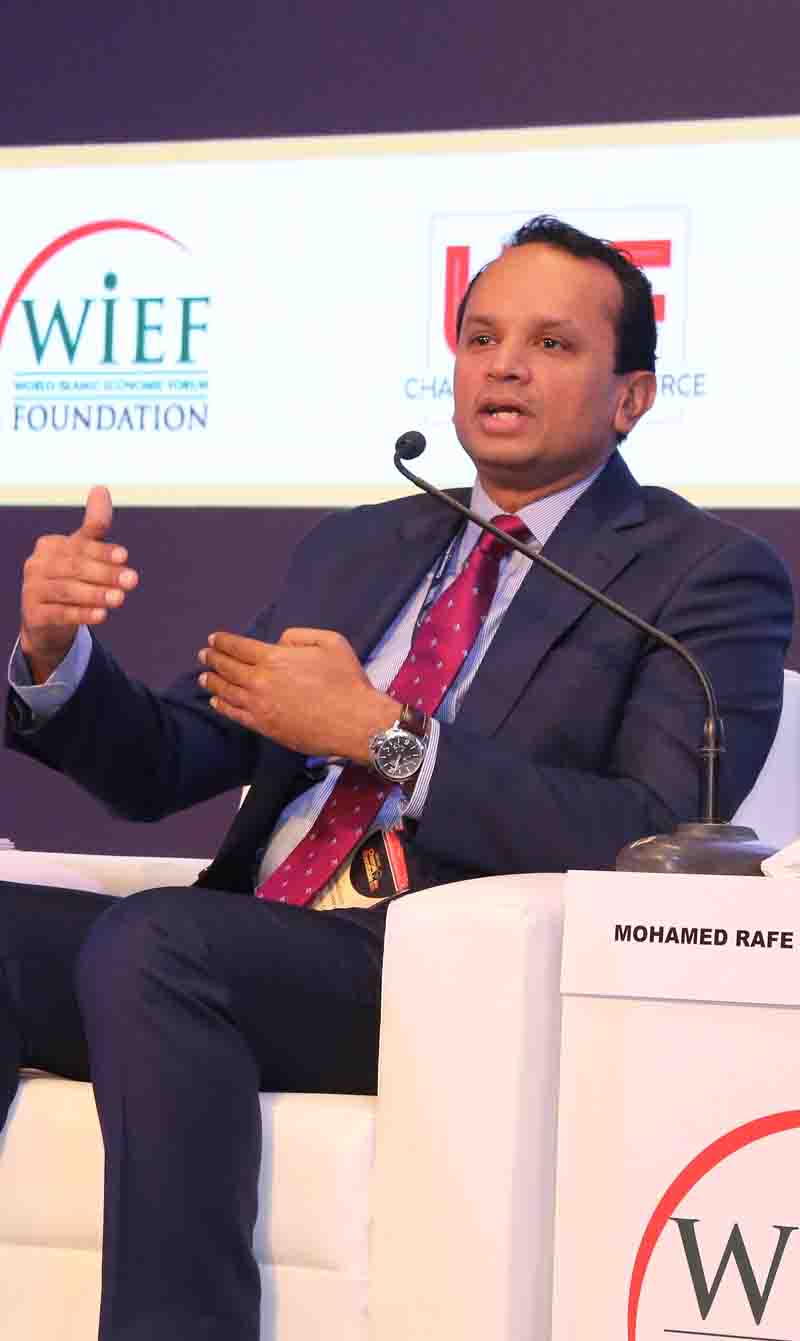Services and challenges of Islamic microfinance
Microfinance conventionally provides services to underprivileged entrepreneurs and works toward poverty alleviation but what’s good to know is whether the Islamic microfinance institutions are really making a change. Panellists of WIEF-INCEIF Workshop on Financial Inclusion explain more.
Conventional banks are traditionally not designed to serve the poor or those who don’t have access to banks, hence the emergence of microfinance institutions to bridge the gap. However the much-heated debate remains on whether or not it’s actually alleviating poverty and the direction in which it’s heading. Whether the rise of Islamic microfinance will be the alternative to conventional microfinance is yet to be seen.
Some claim that research showed no net positive impact for microfinance programmes but the fact remains that microfinance has evidently helped certain individuals. One of the problems conventional microfinance had faced was the high interest of microloans given to the poor, something that Islamic microfinance eliminates. The poor weren’t able to pay the high interest and rather than alleviate poverty, conventional microfinance sustained it.
With the advent of Islamic microfinance, this doesn’t mean conventional microfinance will be completely written off. However, it does highlight how those structural problems will require structural solutions.
Philosophy of Islamic microfinance
Islamic microfinance is microfinance adopting Islamic financial principles and its biggest difference with conventional microfinance is the cost of capital – Islamic microfinance is an interest-free model. It offers a contract of a loan, a financial service that’s based on either contract of exchanges or sales of assets, contracts of partnership in venture, project or transaction, contracts of lease of an asset or its usufruct and contracts of qardh hasan (benevolent loan).
According to Dr Bello Lawal Danbatta, director of Consultancy and Executive Programmes from the International Centre for Education in Islamic Finance (INCEIF) and panellist at WIEF-INCEIF Workshop on Financial Inclusion, the principles of Islam governing the operations of Islamic microfinance include extending financing based on philosophy of brotherhood rather than capital growth based on permissible activities and contracts. It extends financing based on the concept of equitable distribution of wealth rather than capitalism.
‘It believes that money’s not a commodity and the philosophy that the transaction must be free from any form of exploitation,’ says Dr Danbatta. This translates into easy ownership of assets, fair credit terms and conditions, cheaper costs of funds, easy access to capital, cheaper poverty eradication mechanism and to help the unbankable, which addresses the common need for poverty alleviation.
Products of Islamic microfinance
The most available Islamic microfinance products available today are those designed to ease access to working capital. ‘The most popular products are based on the contracts of murabahah (cost-plus deferred sale) or ijarah (leasing),’ Dr Danbatta says and below, he explains further.
Murabahah – This is the most popular in the industry because it enables Islamic microfinance customers to own an asset through instalments. For microfinance institutions, murahabah is considered the most secure form of financing because they’ve an alternative over the assets sold in the event of default by the clients. A microfinance institution purchase an asset or item a client wants for business which then, through a binding agreement, the client buys at a marked up cost for deferred payment within an agreed specific time. ‘Murabaha is usually used by farmers, fishermen, manufacturers and those who need to purchase tools or equipment,’ Dr Raghda El-Ebrashi, who is founder and chairperson of Alashanek ya balady (Association for Sustainable Development), and panellist at WIEF-INCEIF Workshop on Financial Inclusion explains.
Ijarah – Unlike conventional operating lease agreement where the client is only exposed to lease rentals, the key difference is, through ijarah the client will own the leased asset at the end of the lease period. There will be a mutual agreement on lease price and period between microfinance and client and during the leasing period, the microfinance institution owns the leased asset and depreciates it as per the depreciation policy for similar class of assets.
Qardh hasan – This is a lending-group liability product for groups. A working capital financing in form of cash or items that’s provided to a group of microfinance entrepreneurs with similar skills, businesses or living within the same geographical location. Through qardh hasan each member is required to guarantee the repayments of the working capital disbursed collectively or individually. Although the loan is interest free, each group member must agree to pay administrative charges based on the amount the individual received.
Who is eligible for Islamic microfinance
‘All individuals regardless of religion are eligible for Islamic microfinance products,’ Dr Danbatta clarifies. ‘However, there are those who perceive Islamic microfinance products are only popular among Muslims. But they’re very popular among all citizens because it’s more inexpensive than conventional microfinance,’ he continues.
According to Dr Danbatta, sceptics toward conventional microfinance have recently risen in some Muslim-majority countries. For example, in 2003, Rupert Scofield president and CEO of the Foundation for International Community Assistance (FINCA International) had to consult with the local community in Herat, Afghanistan, to comply with the imam on the shariah-compliancy of the institution’s lending modules. This created the first shariah-compliant loans in Afghanistan that helped pave the way for other financial institutions.
Islamic microfinance in Egypt
In Egypt, according to Dr El-Ebrashi, Islamic microfinance is not widely implemented by many financial institutions and that they tend to concentrate on credit not finance such as savings or insurance. ‘The cost of Islamic microfinance is high given the risks that institutions should plan for before the disbursement of funds. Individual risk assessment entails high costs for microcredit customers. In addition, the law of governing microfinance institutions in Egypt (and NGOs dealing in microfinance) doesn’t help in adopting Islamic microcredit methodologies like for example the inability of NGOs to trade assets and invest in other companies or projects.‘ However, she continues, ‘Islamic microfinance is slowly developing in Egypt but that’ll require greater attention to legal issues to facilitate implementations of various Islamic contracts.’
Islamic microfinance in Indonesia
In Indonesia, according to Jamil Abbas who is head of Strategic Alliance at Perhimpunan BMT Indonesia (PBMT) and panellist of WIEF-INCEIF Workshop on Financial Inclusion, Islamic microfinance institutions emerged in the early 1990s and the most popular type baitul maal wat tamwil (BMT) which was established by the local community in the spirit of helping each other grow and develop. Indonesia, which is home to the largest Muslim population in the world, now runs over 4,000 Islamic microfinance institutions that currently serves no less than 3.7 million clients.
Through the zakat, infaq and sadaqah BMT provides hibah (grants) and qardh hasan to the bottom of the pyramid to start or upgrade their microbusinesses. For more established business people, BMT offers shariah-compliant commercial products mudharabah, musharakah, murabahah and ijarah.
Challenges faced by Islamic microfinance institutions
According to Dr Danbatta, the four challenging areas for Islamic microfinance are:
Technical challenges – Related to the technical competency and ability of both the management and employees of the Islamic microfinance institutions to structure and offer competitive products and services that are shariah-compliant because the cost of non-shariah compliancy is high.
Operational challenges – Related to the high cost of disbursement, monitoring and collection repayments from their clients in order to minimise non-performing financing (NPF) at the same time trying to profit for their shareholders and increase the impact of their services to clients.
Regulatory challenges – Regulatory restrictions and rules limit the areas of investment, liquidity management and financing that Islamic microfinance can offer and its institutions aren’t given the privileges of deposit taking banks like in most countries.
Environmental challenges – To manage public expectations, make socio-economic impacts while achieving sustainability as a financial institution.
‘Due to the large number of Islamic microfinance institutions in Indonesia, some of the challenges include supervision, legal issues of various business models and sizes of the financial institutions. The challenges are being tackled by regulators such as Financial Services Authority (OJK), Ministry of Cooperative and SME and Perhimpunan BMT Indonesia (PBMT),’ Abbas adds.
Final words
‘The excessive interest rates of up to 50 per cent by conventional microfinance institutions make the case of Islamic microfinance to be the new alternative means of financing for the poor,’
One of the reasons many believe that Islamic microfinance institutions are more popular today is because many have been disenchanted by regular Islamic banking system that doesn’t offer solutions for financial inclusion and generally doesn’t meet the expectations of the public. In comparison with conventional microfinance institutions, the issue has been raised that people who take microfinance loans have been left in an economically worse situation than they originally started off.
Does this mean Islamic microfinance is the new alternative to conventional microfinance and will this make a difference? Dr Danbatta believes so. ‘The excessive interest rates of up to 50 per cent by conventional microfinance institutions make the case of Islamic microfinance to be the new alternative means of financing for the poor,’ he concludes.
___________________
This year, the WIEF-UEF Chennai Roundtable 2018 will gather academics and experts in relevant organisations and institutions to discuss the opportunities of innovative and alternative finance for business and infrastructure in India. It’s happening on 10 Nov 2018 in India. Details on registration, its programme and speakers here.





